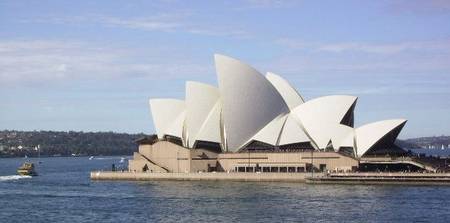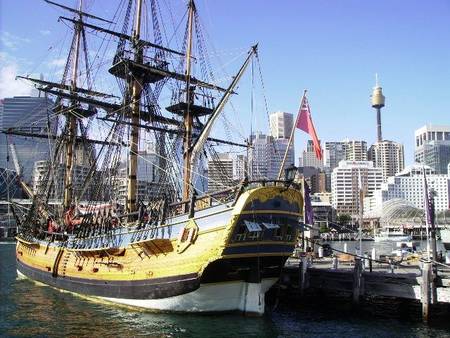Sydney
Dear Readers
I have a few beautiful pictures for you from one of Australia’s most beautiful cities – Sydney – it is an exciting city with lots and lots to explore and it is often mistaken for Australia’s capital – but you know, the capital of the country is Canberra – of course.
One of the first things you see is the huge Sydney Harbour Bridge. It is the world’s largest steel arch bridge. You can actually climb to the top of the bridge – securely fastened by a harness. The views from the top are amazing. Trains, buses, cars, cyclists, and pedestrians criss-cross the bridge below. It took 1400 men eight years to build the bridge, with six million hand driven rivets and 53’000 tonnes of steel. An other amazing fact: It took 30’000 litres of paint to cover it all. It was opened in 1932, and it is sometimes nicknamed the “coathanger” because of its shape.
The famous Sydney Opera House designed by Danish architect, Utzon, opened in 1973. This masterpiece put Sydney on the map forever. The design, shape and purpose of the Opera House stretches back to ancient times. Large shells were found here indicating that this was a ceremonial meeting place where indigenous people shared stories and shellfish.
This is the “New Endeavour” the most famous tallship in the history of White Settlement in Australia. “Endeavour” means “Bestreben, Bemühung”. It is a replica. The original Endeavour ran aground on the east coast of the United States in 1790 – by this time she was an old ship – more than thirty – and the owners did not think it was worthwhile to refloat her. She lay peacefully on the sand and gradually fell to pieces. Amazingly, this was not the end of her travels. In January 1968 when the American spacecraft Endeavour 1 blasted into orbit it carried with it a piece of the sternpost (Heckstange). After Endeavour 1 returned safely from the space, the piece of sternpost was presented to the Australian Government and subsequently placed in the museum at Botany Bay, Sydney.
The Australian story of the original “Endeavour”:
Captain Cook (1728-79) of Yorkshire, England, had the ambition to go as far as it was possible for a man to go.
He set sail in 1768 in the Endeavour, on the first of his three great voyages across the oceans of the world. He took with him botanist Sir Joseph Banks, scientists and artists, and did not return until 1771.
Cook landed on the island of Tahiti in the South Pacific.
The British Government told Cook to look for the southern continent. So, he sailed south, mapped the islands of New Zealand, and then aimed for Van Diemen’s Land (Tasmania), but gales blew the ship off course to the mainland.
On 29 April 1770, he landed at a Bay, which appeared well sheltered from all winds. Cabin boy Isaac Smith was the first to jump ashore. Cook first called this bay “Sting-Rays Harbour”, but changed the name to “Botany Bay” because of numerous so far unknown plants found there.
“Botany Bay” is the place where Sydney was built later on.
After continuing north, the Endeavour struck a coral reef. Cook threw the guns overboard to lighten the ship’s load and refloat it. He beached the vessel for quick repairs at the Endeavour River in today’s Far North Queensland. And in the name of His Majesty King George the Third he took possession of the whole Eastern Coast of Australia, naming it New South Wales.
This voyage was a great feat of navigation and discovery. Cook’s other achievement was to take special care of his crew’s health. He made all the sailors eat pickled cabbage to prevent them from getting scurvy (Skorbut), a common complaint in those times because of the long months spent at sea.
Seeing this ship anchored in Sydney Harbour – the Endeavour – one thing crosses my mind immediately: In this energy hungry world of today and ever increasing fuel prices and shortages of fuel – is this the way we are going to travel around the world again in future? In Sailing Ships? Who knows!
The story about the Indigenous People (Aborigines) living here before White Settlement was left aside this moment. It is a story and tragedy of its own.
Many hello out of the blue Whitsundays in the Great Barrier Reef
Ursula Simak




